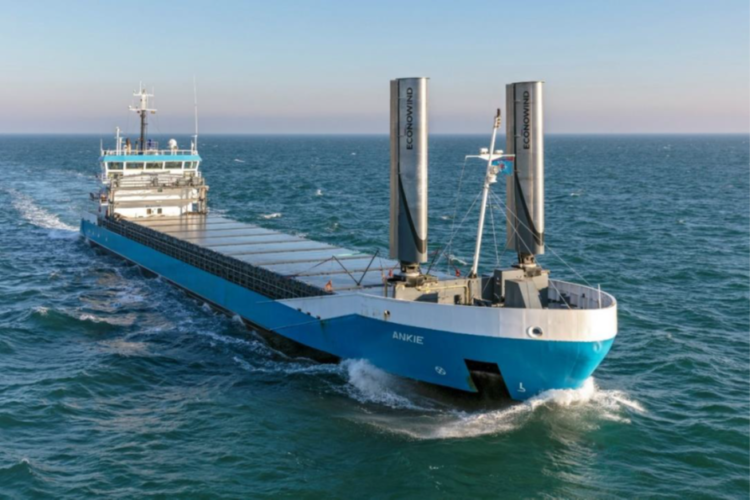Ventifoil wind-assist gets first commercial installation
eConowind’s Ventifoil wind-assist technology has been deployed commercially for the first time, with two 10-metre units attached to the Dutch vessel MV Ankie.

The Ventifoils resemble aircraft wings with vents and also feature an internal fan. This combination helps create boundary layer suction that delivers a propelling force, enabling vessels to reduce fuel use. Ventifoils are just one of a number of wind-assist concepts emerging as shipping seeks to reduce carbon emissions, with The Engineer exploring the technology in-depth in its February cover feature.
https://www.theengineer.co.uk/wind-ships-marine-propulsion/
The 3,600 DWT general cargo vessel MV Ankie recently made its first voyage with its new Ventifoils attached, sailing from Delfzijl in the Netherlands to Hamburg, onwards to Norway and then back to Rotterdam. The journey was carried out by Jan van Dam Shipping on behalf of maritime logistics conglomerate Wagenborg.
“We take an active part in the shipping industry’s de-carbonising energy transition,” Wagenborg said in a statement.
“Together with our stakeholders, such as our affiliated captain owners, clients, investors, employees and suppliers, we accept sustainability challenges to reduce our environmental footprint. We are happy Jan van Dam, who has been sailing for Wagenborg over 26 years now, picked up the glove resulting in this Ventifoil project.”
Register now to continue reading
Thanks for visiting The Engineer. You’ve now reached your monthly limit of news stories. Register for free to unlock unlimited access to all of our news coverage, as well as premium content including opinion, in-depth features and special reports.
Benefits of registering
-
In-depth insights and coverage of key emerging trends
-
Unrestricted access to special reports throughout the year
-
Daily technology news delivered straight to your inbox










Water Sector Talent Exodus Could Cripple The Sector
Maybe if things are essential for the running of a country and we want to pay a fair price we should be running these utilities on a not for profit...